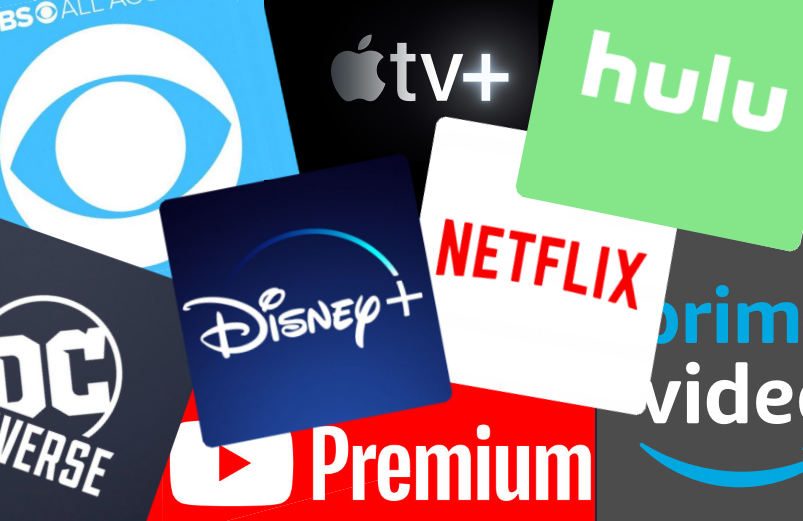Stream Dream: Navigating the Future of Online Entertainment
Stream Dream: Navigating the Future of Online Entertainment
Blog Article

In recent years, online streaming has transformed the way we consume entertainment, giving rise to a dynamic landscape where traditional media struggle to keep pace. As millions of viewers turn to platforms that deliver content on-demand, the idea of settling down for a scheduled television show has become almost archaic. Instead, we find ourselves immersed in a world of choice, where entire seasons of our favorite series are available at our fingertips, and live events can be watched from anywhere in the world.
As the streaming industry continues to evolve, it offers both opportunities and challenges for content creators, consumers, and technology companies alike. With a proliferation of platforms and varying subscription models, navigating this ever-changing terrain can be daunting. Yet, the allure of streaming remains strong, promising a future where creativity knows no bounds and where audiences can engage with content in ways that were previously unimaginable.
See More
The Rise of Streaming Services
The landscape of entertainment has dramatically transformed with the advent of online streaming services. In less than a decade, platforms like Netflix, Hulu, and Amazon Prime Video have revolutionized how audiences consume content, creating an on-demand culture where viewers seek instant gratification. This shift has been fueled by the proliferation of high-speed internet and the ubiquity of smartphones and smart TVs, allowing consumers to access a vast array of movies, TV shows, and original programming anytime, anywhere.
As traditional cable television struggles to keep pace, streaming services have capitalized on the desire for flexibility and personalization in viewing habits. The rise of subscription-based models has given consumers the power to choose their entertainment without the constraints of cable packages. This not only caters to diverse tastes but also promotes a binge-watching culture, where entire seasons of shows can be watched in one sitting. The competition among streaming giants has also led to increased investment in exclusive content, further attracting audiences.
Moreover, the global reach of online streaming services is changing how content is produced and distributed. Viewers are no longer limited to local programming; instead, they have access to international films and series, broadening their entertainment horizons. As services continue to expand into new regions, they adapt to cultural nuances while also providing a platform for diverse voices. This evolution marks a significant shift in the entertainment industry, with streaming services at the forefront of a new era, setting the stage for the future of online entertainment.
Shifts in Consumer Behavior
As online streaming services continue to evolve, consumer behavior is shifting dramatically. Viewers are increasingly moving away from traditional cable subscriptions in favor of on-demand platforms that offer greater flexibility and personalized experiences. With the rise of binge-watching culture, audiences now prefer to consume entire seasons of shows at once, leading to a fundamental change in how content is produced and released. This shift has prompted streaming providers to invest in original content that caters to the preferences and habits of modern viewers.
In addition to content consumption patterns, the way audiences discover new shows and movies is also changing. Social media platforms and streaming service algorithms play a significant role in influencing consumer choices. Instead of relying on traditional advertising or word of mouth, viewers now often turn to recommendations from friends or trending series shared online. The impact of social media engagement has also led to the phenomena of "watch parties" and communal viewing experiences, further deepening the connection between consumers and the content they consume.
Moreover, the demand for diverse and inclusive content has transformed the streaming landscape. Consumers are actively seeking programming that reflects different cultures, identities, and experiences. This shift has motivated streaming platforms to broaden their catalogs and feature a wider variety of genres and stories. As audiences evolve and express their preferences more freely, streaming services must remain responsive to these changes to retain viewer loyalty and continue attracting new subscribers.
The Future of Live Streaming
As technology continues to evolve, the future of live streaming is poised for remarkable advancements. Increasing internet speeds and improved accessibility will enable higher-quality streams that can reach viewers worldwide without buffering or interruption. This enhancement will transform how content creators and audiences connect, making live streaming a more immersive and engaging experience. With the rise of 5G technology, we can expect a surge in mobile live streaming, allowing content to be broadcasted from almost anywhere.
Interactive features will play an essential role in the future of live streaming. Platforms are increasingly integrating tools that allow viewers to engage with the broadcaster in real-time through live chats, polls, and reactions. This interactivity fosters a sense of community and makes viewers feel like active participants rather than just passive consumers. As creators leverage these tools, content will become more tailored to audience preferences, resulting in more personalized viewing experiences.
The market for live streaming will also witness significant diversification. While gaming and entertainment remain prominent, we can anticipate growth in niche areas such as live shopping, wellness, and education. Businesses and influencers will explore innovative ways to monetize their streams through subscriptions, advertisements, and merchandise sales. As the landscape expands, live streaming will undoubtedly become a more integral part of our online lives, reshaping how we consume and interact with entertainment.
Report this page